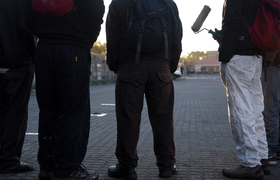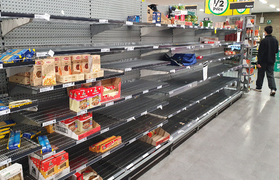Living on the edge: The IMF’s economic outlook for sub-Saharan Africa
07 November 2022 | Story Lisa Templeton. Photos Lerato Maduna. Read time 7 min.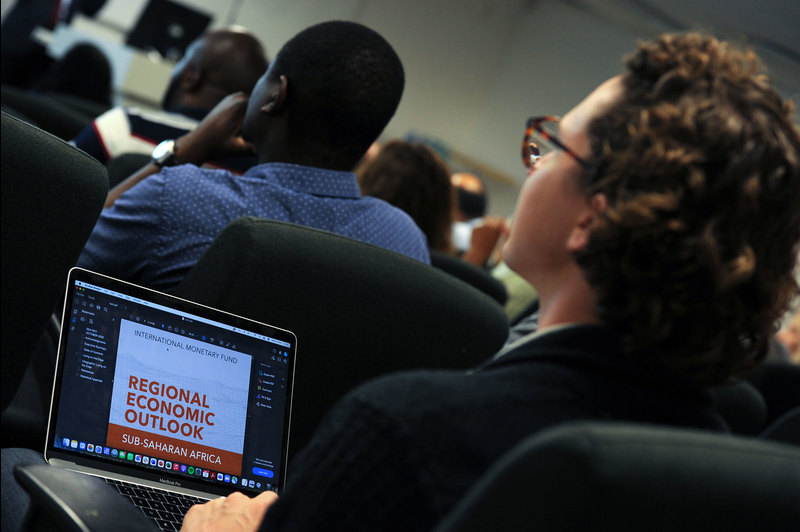
The tentative recovery the sub-Saharan region (SSA) enjoyed in the wake of the pandemic is set to teeter into retreat as global economic instability impacts key vulnerabilities within the region. So warned the International Monetary Fund (IMF) as it launched its October 2022 Regional Economic Outlook Report for Sub-Saharan Africa at UCT’s School of Economics – an honour to the school which plays a key role in the region, drawing some of the brightest economic minds on the continent, said director, Associate Professor Reza Daniels, in his welcome address.
The biannual report, this time named “Living on the Edge”, foresees a dramatic slowdown in gross domestic product (GDP) growth in the region from a 2021 bounce-back of 4.7% to a predicted drop of over a percentage point to 3.6%, as a slowdown on advanced economies, coupled with tighter financial conditions, volatile commodity prices and soaring inflation across the globe, take their toll on a region already hard hit by COVID-19.
“Today Southern Africa is shaped by the global economic environment,” said Luc Eyraud, the head of Regional Studies at the IMF’s African Department, as he presented the report’s findings.
“Yes, there are regional factors such as conflict and the impact of climate change, but what really matters is the global environment, where there have been three main shifts: a slowdown in global growth, a significant increase in commodity prices after the pandemic and Russia’s invasion of the Ukraine.’
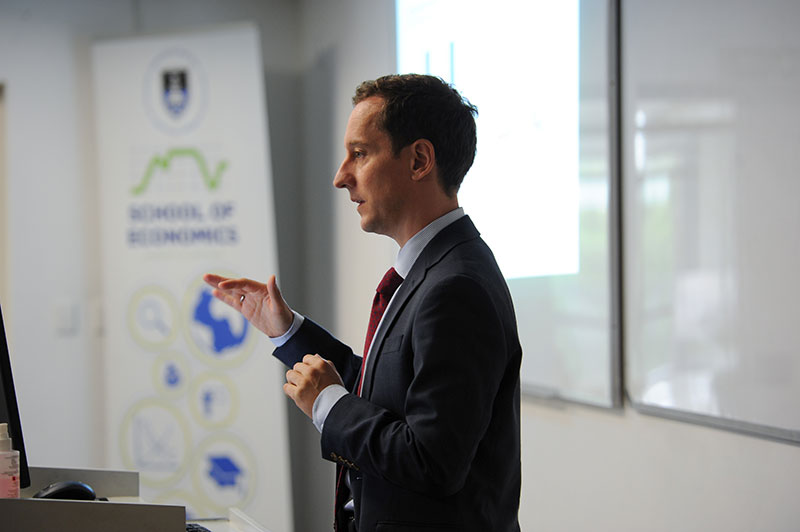
Other developments he cited include tighter financial conditions, larger capital outflows driven by higher global interest rates, and large fluctuations in exchange rates and depreciations against the dollar.
All of this means an uncertain outlook for SSA
The rapid rise in global inflation, fuelled by an increase in energy and essential food prices, has put the squeeze on most households in the region and impacted hardest those who are most vulnerable.
With a third of the world’s wheat, for example, produced in Russia and Ukraine, prices spiked dramatically when Russia reneged on wheat supply agreements.
Not only that, but public debt and inflation (15% to 20% in some cases) in the region are higher than they have been in 15 years, while fiscal positions have deteriorated.
The sharp increase in commodity prices has had a significant impact, although some countries, such as Angola, have benefitted from the increase in oil prices. Indeed, oil exporters are expected to grow this year by 3.3%. The Democratic Republic of the Congo too is benefitting from high commodity prices, while others are enjoying a rebound in tourism, but some, such as Malawi, are in a fragile position.
Policy making at the edge
Under these circumstances, many countries already beleaguered by socio-economic and security challenges, find themselves pushed closer to the edge with not many options open to them.
“With growing needs and less policy space, policymakers must strike a delicate balance,” said Eyraud. “They need to fight fire, build resilience and move away from the edge. The question is how? The importance of growth goes a long way.”
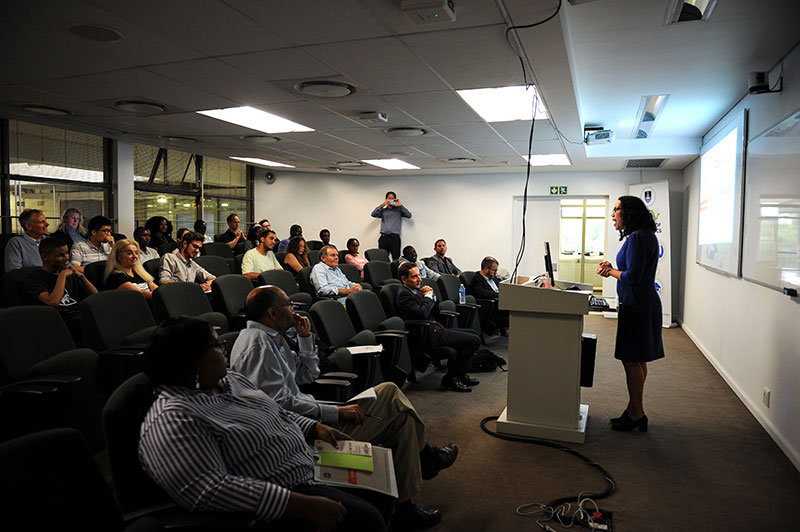
Enter the IMF. “There are concerns that the IMF comes in and imposes draconian measures,” said Cathy Patillo, the deputy director of the IMF’s African Department. “This is far from the truth. Instead, we do regular analysis specifically geared towards policy, so that when we engage with policymakers, it is evidence based.”
The IMF has 22 programmes running in the region and has injected over US$50 billion since COVID-19 into debt relief, emergency programmes and more.
The top two policy priorities cited by Eyraud were food insecurity and the consolidation of public finances and stabilisation of debt at below 70% of GDP.
Debt has increased significantly in the last decade from 30% of GDP to 60%, he said, and a third of SSA countries have debt greater than 70% of GDP.
Impossible trade offs
It is in this pressure pot that policymakers find themselves having to address socioeconomic crises, sometimes through immediate, untargeted, costly and unsustainable measures, while trying to build resilience, create growth and build a buffer against future shocks.
What is needed is policy that builds a platform towards sustainable growth and away from the edge.
A saving of even 5% of GDP creates a buffer against future shock. Savings remain too low as countries juggle the weight of immediate needs. How do you build buffers when facing high inflation and debt, and dwindling growth.
“How much should you save, and how much should you spend? This is something countries struggle with. We have people dying on our doorstep today. How do we save for tomorrow?” Eyraud said.
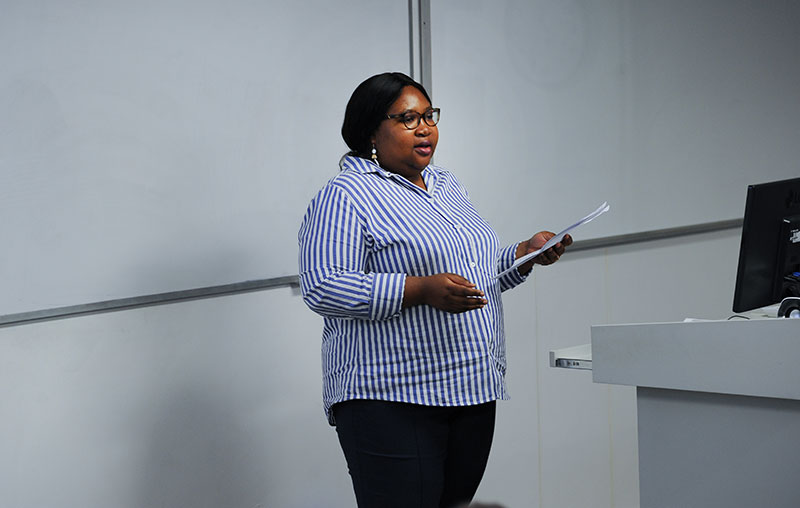
Dr Christine Makanza, a lecturer at the School of Economics, said: “With the two major risks being food insecurity and debt unsustainability, how do countries manage fiscal consolidation, while trying to create cash transfers and safety nets to combat food insecurity?”
She advocates for interventions that target the most vulnerable in terms of food, and rethinking whether the tightening of monetary policy to combat higher inflation, a measure advanced economies are undertaking, is necessarily the best approach, given the resulting higher debt burden and lower growth from lower demand.
Rising regional debt is riding side by side with rising interest rates, now around 10% and projected to exceed 50% for most countries. Higher interest rate payments only increase the debt burden, as do higher borrowing costs as risk premium increases for overburdened countries, Dr Makanza said.
Brave new world: who is doing the lending?
Professor Haroon Bhorat, the director of the Development Policy Research Unit at the School of Economics, talked of bridges of uncertainty spooking advanced economies and sparking inflation. These include the Ukraine war, China’s property market collapse and the potential for more lethal variants of COVID-19.
The question remains: who is the doing the lending? No longer are creditors limited to institutions such as the IMF with predictable terms.
“China is the obvious one, but there are others at the debt table, and what does that imply about the future of debt dynamics? The IMF would not claim the port of Maputo as collateral, but someone like China might,” Professor Bhorat said.
 This work is licensed under a Creative Commons Attribution-NoDerivatives 4.0 International License.
This work is licensed under a Creative Commons Attribution-NoDerivatives 4.0 International License.
Please view the republishing articles page for more information.








